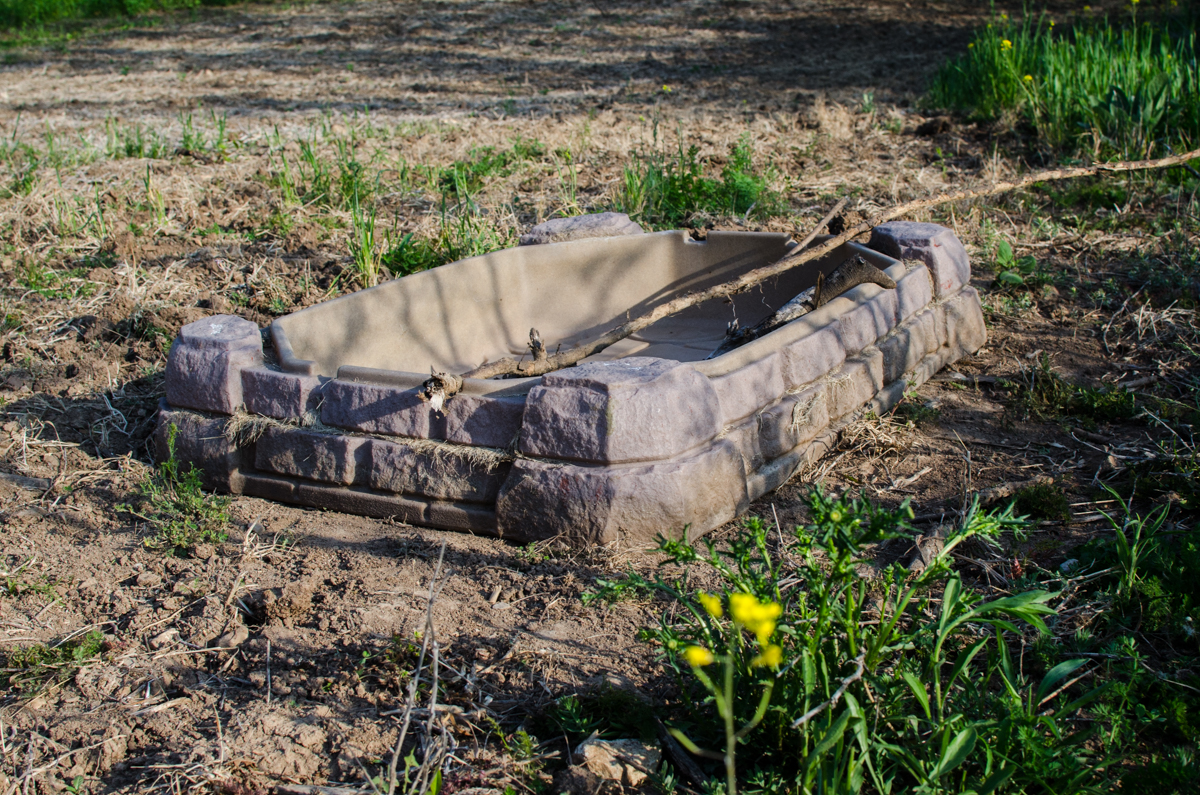As deer management continues to advance and gain popularity, more and more hunters are taking their deer hunting properties to the next level. Today, we’re doing things that the old timers would have scoffed at with words like:
“You’re telling me you paid to have food planted specifically for deer to eat?”
“Let me get this straight, you specifically cut perfectly good trees and leave them lying in jungled mess, just so the deer have a place to hide?”
“You think a little four foot “pond” is going to draw deer in?”
My, how hunting has changed . . . for better or worse, I’ll leave that up to you. But, there is one thing for sure, land management is dang fun and it stretches out the much-too-short deer season into a yearlong endeavor.
Food plots are usually top-of-mind when it comes to improving the deer habitat, but let’s face it, the majority of hunters don’t have the luxury of owning or hunting on properties with food plots. This is where deer water holes come in. They are cheap, easy to install, and can be placed just about anywhere and used by anyone.
Until recently I’ve strictly relied on natural water sources to provide deer with the water they need on the property I hunt. It’s not a dry property by any means, as there are several ponds, small creeks, and marshy areas scattered throughout. Therefore, the deer are never really stressed for water, even during years of drought. The notion that the deer didn’t need extra water sources on this specific property has kept it back of mind. Then it hit me, just because the deer don’t need more water sources doesn’t mean I, as the hunter, can’t benefit from them.
Recently I scored an old sandbox off a buddy who just bought a house. Awesome, right? He has no kids, so he was getting rid of the playset in his backyard and the plastic molded sandbox was up for grabs. The earth toned box would be perfect for a makeshift deer watering hole. I ended up placing it in the center of a small food plot to hopefully better the odds of getting a perfect shot on a rutting buck.
 This DIY sandbox water hole blends in pretty naturally to the surroundings.
This DIY sandbox water hole blends in pretty naturally to the surroundings.
Now that I’ve put one out, there’s plans for several more in the coming years. The simplicity of these DIY water holes makes it hard not to put one by every treestand. If it’s not going to scare the deer off and has the potential to draw a buck in for a perfect shot, what’s the harm? The cool thing about water holes is you can place them anywhere! Placing them on ridgetops and funnels may slow up cruising bruiser buck for a quick drink during the rut, allowing you to get off a perfect shot. Placing them in open timber or along field edges can also help draw in those wandering deer to within bow range.
The most innovative deer water hole designs include 50 gallon barrels cut in half, kid swimming pools, cattle tanks, and dug out holes lined with plastic. I hope you caught the sarcasm, but really, that’s how easy it is to provide water regardless of drought conditions.
The 50 gallon barrels seem to be the most popular DIY technique. I have seen them cut in half the long way (creating a trough) or the short way (more like a big bucket). They can be buried to create a more natural feel for the deer or left on top, neither has shown a significant advantage in deer use over the other.
The plastic kiddie swimming pools are a cheaper option than cattle water tanks and they achieve the same goal, however, a tank will not crack from freezing winter conditions and will look a little nicer from your tree stand. The plastic lined hole may work, but chances are the liner will get holes from hooves, rocks, and other debris causing it to drain dry. It is also a good idea to leave a stick in the trough so little critters that fall in can get out of tanks with steep sides.
 Be sure to leave some sticks or rocks in the tank if it has steep sides.
Be sure to leave some sticks or rocks in the tank if it has steep sides.
If the rains aren’t prevalent, filling them can be a chore depending on their placement and accessibility. The easiest way is to use a tank with a hose attachment strapped to your ATV, UTV, truck, or tractor. Coolers, covered buckets, and even tractor buckets covered with plastic can also get the job done.
Installing these deer water holes is a quick and easy way to provide a drink to the wildlife and attract deer to trail cameras and hunting spots. Once the deer get conditioned to this new source, it may shrink their range if that is the limiting resource (between food, cover and water) on your hunting property. Ultimately this can help your herd and your chances of tagging out!
UPDATE: IT WORKS!



















